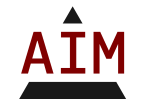A little over a week after successfully landing a rover on the moon, India on Saturday launched its first solar mission aimed at studying the outer layers of the sun.
Aditya L1, as the mission is called, weighs about 3,300 pounds and will travel a distance of about 930,000 miles over four months. It is then to continue orbiting for several years, all the while sending data back to Earth.
The spacecraft is designed to study the sun’s outer layers, its chromosphere and corona, to better understand the physics and dynamics of our local star.
“I am extremely happy that Aditya L1 is injected into the intended orbit flawlessly,” Nigar Shaji, the project’s director, said after the successful launch.
Ms. Shaji, calling the mission an asset to the “heliophysics of the country and the global scientific fraternity,” said the spacecraft would now continue “its 125 days of long journey towards L1.”
A large crowd, including children in school uniforms, watched the rocket’s launch in the noon heat from the viewing gallery of the Satish Dhawan Space Center, the launch facility in India’s southern state of Andhra Pradesh. Many of them were carrying colorful umbrellas to protect from the sun.
Last month, India became the fourth country to land on the moon, and the first to do so on its southern polar region, with its Chandrayaan 3 spacecraft. It was the nation’s second try at a moon landing, after its Chadrayaan 2 craft crashed in 2019, and came just days after a Russian lander, also aiming for the southern polar region, had crashed.
The recent successes of India’s space program parallel the nation’s growth as an economic and geopolitical power, and officials cite them as a manifestation of its strong traditions in science and technology. India’s space research agency, called ISRO, has accomplished its goals on a budget much smaller than that of many other space-faring countries.
India’s solar mission is the latest in a string of probes of the sun; some by NASA, both individually and in cooperation with the European space agency, and others by China and Japan.
The Aditya L1 spacecraft is carrying seven payloads, including remote sensing instruments. After it travels nearly a million miles, the craft will be placed in a halo orbit called Lagrange point 1 (L1), which will provide an uninterrupted view of the sun and its activities and its effects on space weather in real time.
With increasing attention and competition in space, understanding space weather is becoming important for planning missions and protecting satellites and spacecraft. Indian scientists hope the data Aditiya L1 provides will add to the knowledge of potential disturbances in space weather that are traced back to the sun’s energy, and will help in predicting such disturbances.
“These, holistically, will give you a lot of information not only about the sun but also the heliosphere,” Annapurni Subramaniam, the director of the Indian Institute of Astrophysics, said of the payloads on the spacecraft.
Dr. Subramaniam’s team designed one of the major payloads on the spacecraft, the Visible Emission Line Coronagraph, which will detect the emission lines of certain elements from the sun’s corona, the outermost part of the sun’s atmosphere.
“This instrument looks at the sun as though it is always in total solar eclipse,” she said. “You want to have the eclipse all the time because you want to see the corona.”

